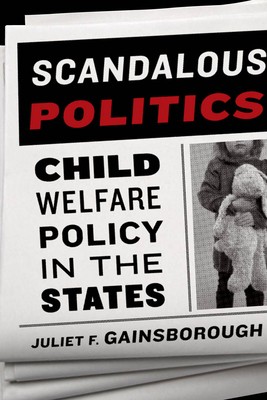
- We will send in 10–14 business days.
- Author: Juliet F Gainsborough
- Publisher: Georgetown University Press
- ISBN-10: 1589017072
- ISBN-13: 9781589017078
- Format: 15.5 x 22.7 x 1.6 cm, softcover
- Language: English
- SAVE -10% with code: EXTRA
Reviews
Description
Little work has been done to systematically analyze how high-profile incidents of child neglect and abuse shape child welfare policymaking in the United States. In Scandalous Politics, Juliet Gainsborough presents quantitative analysis of all fifty states and qualitative case studies of three states (Florida, Colorado, and New Jersey) that reveal how well-publicized child welfare scandals result in adoption of new legislation and new administrative procedures.
Gainsborough's quantitative analysis suggests that child welfare policymaking is frequently reactive, while the case studies provide more detail about variations and the legislative process. For example, the case studies illustrate how the nature and extent of the policy response varies according to particular characteristics of the political environment in the state and the administrative structure of the child welfare system.
Scandalous Politics increases our understanding of the politics of child welfare at both the state and federal level and provides new insights into existing theories of agenda-setting and the policy process. It will be of interest to everyone involved with child welfare policymaking and especially public policy and public administration scholars.
EXTRA 10 % discount with code: EXTRA
The promotion ends in 19d.05:34:15
The discount code is valid when purchasing from 10 €. Discounts do not stack.
- Author: Juliet F Gainsborough
- Publisher: Georgetown University Press
- ISBN-10: 1589017072
- ISBN-13: 9781589017078
- Format: 15.5 x 22.7 x 1.6 cm, softcover
- Language: English English
Little work has been done to systematically analyze how high-profile incidents of child neglect and abuse shape child welfare policymaking in the United States. In Scandalous Politics, Juliet Gainsborough presents quantitative analysis of all fifty states and qualitative case studies of three states (Florida, Colorado, and New Jersey) that reveal how well-publicized child welfare scandals result in adoption of new legislation and new administrative procedures.
Gainsborough's quantitative analysis suggests that child welfare policymaking is frequently reactive, while the case studies provide more detail about variations and the legislative process. For example, the case studies illustrate how the nature and extent of the policy response varies according to particular characteristics of the political environment in the state and the administrative structure of the child welfare system.
Scandalous Politics increases our understanding of the politics of child welfare at both the state and federal level and provides new insights into existing theories of agenda-setting and the policy process. It will be of interest to everyone involved with child welfare policymaking and especially public policy and public administration scholars.


Reviews